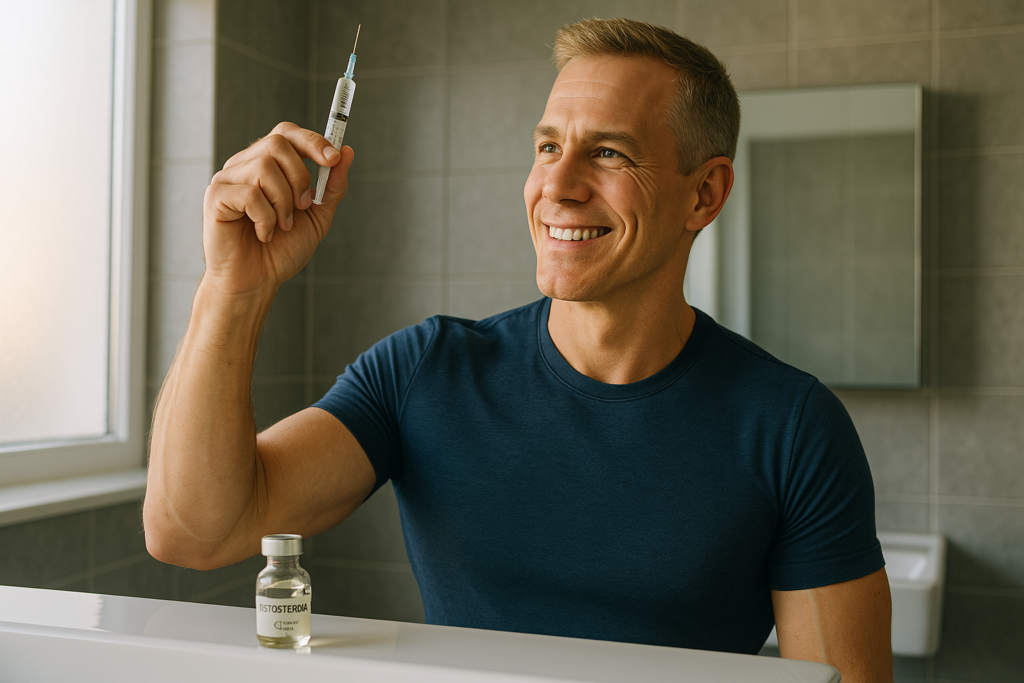How to Adjust Your TRT Protocol for Optimal Results: A Practical Guide

Last Updated On March 31, 2025
Testosterone replacement therapy (TRT) is a highly personalized treatment, and individual responses can change over time. Whether you’re not experiencing the benefits you hoped for, noticing new symptoms, or reviewing your lab results, adjusting your TRT protocol is sometimes necessary to stay on track.
In this guide, we’ll discuss when and how to make adjustments to your TRT protocol, focusing on practical strategies backed by science. By understanding the key factors that influence TRT efficacy, you can optimize your treatment for long-term success.
Recognizing the Need for a Protocol Adjustment
Regular self-assessment and bloodwork are essential for monitoring the effectiveness of your TRT protocol. Here are some common indicators that adjustments might be needed:
1. Persistent Symptoms
- Examples: Fatigue, low libido, brain fog, or mood swings that persist despite starting TRT.
- Reason: Your current dosage or frequency may not be sufficient to maintain optimal testosterone levels.
2. Over-Supplementation Symptoms
- Examples: Acne, oily skin, or difficulty sleeping.
- Reason: These may suggest that your testosterone levels are running higher than needed, and a small dosage adjustment could help.
3. Lab Results
- Key Metrics to Monitor:
- Total Testosterone and Free Testosterone: Ensure they fall within your target range (typically 500–1300 ng/dL for Total T and 15–30 ng/dL for Free T).
- Other Hormones: Include SHBG and DHEA-S as part of a comprehensive assessment.
- Context Matters: Elevated estradiol or hematocrit levels are not inherently problematic unless accompanied by symptoms. Regular bloodwork helps identify trends over time rather than relying on one-off results.
How to Adjust Your TRT Protocol
1. Dosage Adjustments
- Increasing Dosage: If your testosterone levels remain low and symptoms persist, a gradual increase in dosage may improve results. Increase by 10-25 mg/ml (roughly 10% of your current dose) and re-evaluate after 3 months.
- Decreasing Dosage: If you’re experiencing side effects or lab results show excessively high testosterone levels, lowering your dose can help stabilize your response. Decrease your current dose by 10-25 mg/ml (roughly 10%) and re-evaluate after 3 months.
2. Frequency Modifications
- More Frequent Injections: Switching from weekly injections to smaller, more frequent doses (e.g., twice weekly) helps stabilize hormone levels and reduces fluctuations that could cause symptoms.
- Alternative Methods: For some, switching to transdermal gels, creams, or patches may provide a more consistent delivery method.
3. Tailoring to Your Goals
- For Energy and Mood Stability: Optimize Free Testosterone levels and ensure balanced SHBG levels.
- For Physical Results: Consider adjusting your protocol to maintain lean muscle mass while monitoring potential symptoms like water retention.
Lifestyle and Nutrition Considerations
Your TRT protocol is only one part of the equation. A supportive lifestyle amplifies the benefits and minimizes side effects:
- Diet: Focus on nutrient-dense foods, including lean proteins, healthy fats, and vegetables to support overall hormonal health.
- Exercise: Regular resistance training and cardiovascular activity help enhance testosterone’s effects on body composition.
- Sleep: Aim for 7-9 hours of quality sleep each night to improve recovery and hormonal balance.
- Stress Management: High cortisol levels can counteract testosterone’s benefits. Practices like yoga, meditation, or regular relaxation can help.
Key Takeaways
- Adjusting your TRT protocol is a natural part of optimizing treatment and should always be based on symptoms, lab results, and overall health trends.
- High estradiol or hematocrit levels are only concerning when paired with symptoms; context matters.
- Focus on stabilizing hormone levels through dosage and frequency adjustments and support your results with a healthy lifestyle.
By monitoring your response and making targeted adjustments, you can fine-tune your TRT protocol to meet your unique needs and maximize its benefits. Always consult with a qualified healthcare provider before making significant changes to your protocol.